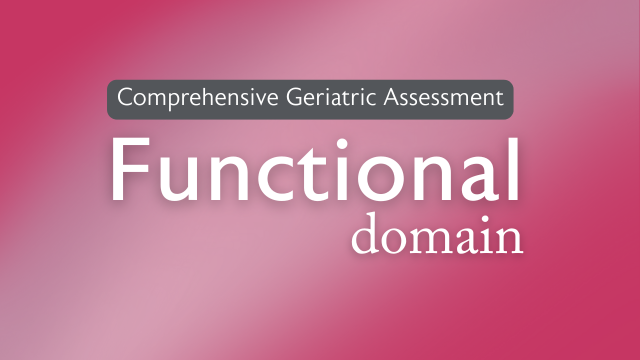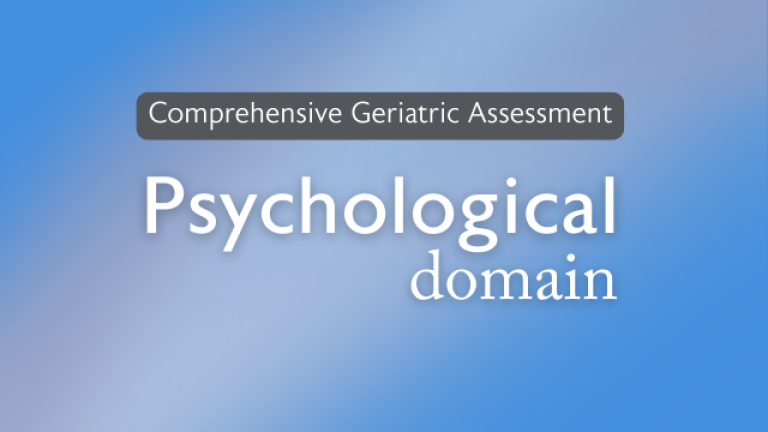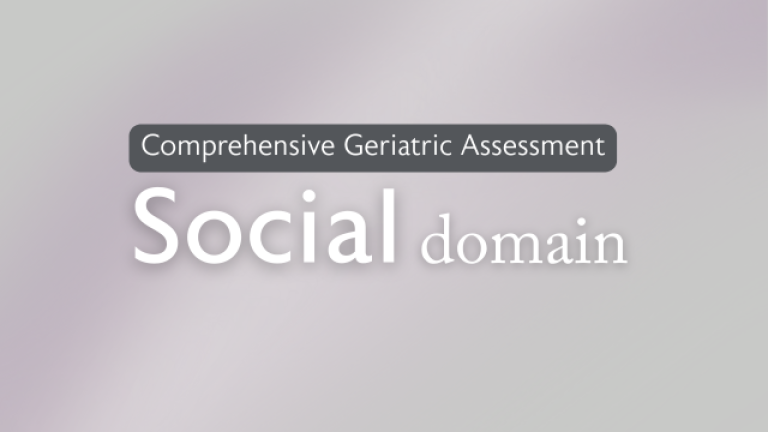Comprehensive Geriatric Assessment (CGA): Functional domain
The functional domain of CGA focuses on mobility, activities of daily living (ADLs/IADLs), gait stability, and rehabilitation potential. Assessing Activities of Daily Living (ADLs) can provide insight into an individual’s functional status, independence, and care needs. These aspects, combined with the other five domain areas, are essential for creating a comprehensive care plan.
Assessing ADLs can help determine the level of independence and/or support required for living at home and can identify early signs of functional decline.1 Addressing difficulties can guide rehabilitation, home modifications, or additional support (from an individual’s existing support network or external services) to maintain independence and improve quality of life.
ADLs are often split into ‘basic’ ADLs (BADLs) and instrumental ADLs (IADLs) as detailed below, which will help ascertain the level of support that a person requires.
Frailty increases the risk of dependency in ADLs due to a wide variety of factors including reduced strength, endurance, and mobility. Evidence shows that difficulty with ADLs is strongly linked to adverse outcomes, including falls, hospitalisation, institutionalisation, and mortality. Often functional impairment associated with frailty leads to reduced activity, which in turn accelerates further decline. Identifying early challenges in ADLs allows for targeted interventions, such as therapy interventions, assistive devices, environmental modifications or caregiver support, to slow functional deterioration. Research suggests that maintaining Instrumental ADL function through social engagement, cognitive stimulation, and adaptive strategies can delay disability progression.2,3
Key elements to assess
- Personal care tasks: Feeding, washing, dressing, toileting and continence.
- Mobility: Walking (indoors and outdoors), stair use.
- Transfers: Bed, chair, toilet.
- Sensory and cognitive impact on function: Including vision, hearing, swallowing, proprioception, executive functioning inc. attention and memory.
Additionally for Instrumental ADLs, assessment should cover
- Household management: Cooking, cleaning, laundry.
- Financial and medication management: Ability to manage finances, take medications correctly.
- Community access: Shopping, transportation, use of communication devices (phone, internet, digital literacy).
- Social engagement and decision-making: Ability to interact and make informed choices.
Once all key information has been collated about functional ability and concerns, a management plan to address these must be made with the individual in a holistic way that balances risks and respects their independence and the way in which they wish to live.
References
References
Click to expand
- Vermeulen J, Neyens JC, van Rossum E, Spreeuwenberg MD, de Witte LP. Predicting ADL disability in community-dwelling elderly people using physical frailty indicators: a systematic review. BMC Geriatr. 2011 Jul 1;11:33. doi: 10.1186/1471-2318-11-33. PMID: 21722355; PMCID: PMC3142492.
- Aliberti MJR, Cenzer IS, Smith AK, Lee SJ, Yaffe K, Covinsky KE. Assessing Risk for Adverse Outcomes in Older Adults: The Need to Include Both Physical Frailty and Cognition. J Am Geriatr Soc. 2019 Mar;67(3):477-483. doi: 10.1111/jgs.15683. Epub 2018 Nov 23. PMID: 30468258; PMCID: PMC6510389.
- Marshall GA, Amariglio RE, Sperling RA, Rentz DM. Activities of daily living: where do they fit in the diagnosis of Alzheimer's disease? Neurodegener Dis Manag. 2012 Oct 1;2(5):483-491. doi: 10.2217/nmt.12.55. PMID: 23585777; PMCID: PMC3622716.





